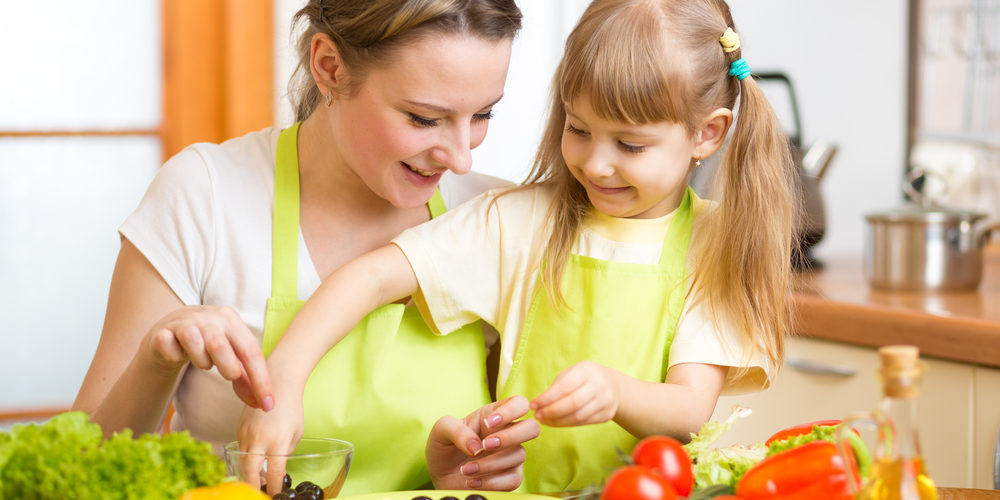In any Montessori school in Philadelphia, you will find that there is no such thing as the cafeteria. Children bring their own lunches. That is why with a new school year already upon us, you might be looking for some ways to make lunch more exciting. After all, the defining quality of a Montessori lunch is preparation and a focus on nutrition. Plus, children should be able to eat their meals without any difficulty.
Want to pack the perfect lunch box for your child? Here are some tips:
When Packing
Just like a prepared environment around the house or school, a good Montessori lunch box begins with preparation! Here are some ways to make a great lunch for your child to bring to their Philadelphia Montessori school:
1. Reusable Containers
While plastic disposable Ziploc bags seem like the fast and easy way to package a child’s meal, they aren’t a great choice for the environment. Lunch is another chance to teach children about the world, and so the students of a Montessori school are always encouraged to pack their meals in eco-friendly, BPA-free, reusable containers. Not only are you helping reduce plastic waste, but the opening and closing of stackable bento boxes or unzipping a lunchbox teach fine motor skills. Children also learn to match lids with the right container or what can fit into which container when cleaning their lunch up.
2. Labeling
This is especially important at the beginning of the school year, when the children can easily get confused about which lunchbox is whose. By labeling their lunchbox and containers, it not only ensures that there is no confusion but that your items get returned home, too. Plus, younger children will learn how to recognize their name.
3. Prepare With Your Child
If there is one way to make a lunch more Montessori, it would be having your child prepare their lunch with you. The evening before, have your child join you in the kitchen. This gives your child a chance to practice some valuable life skills they may have picked up in the classroom, such as matching container lids, opening and closing containers and jars, folding napkins, transferring foods with a spoon, and cleaning up their messes.
Children can even assist with cleaning and cutting fruits and vegetables, peeling hard boiled eggs, rolling up deli meats, and organizing their lunch box as they would like.
What Foods to Choose
Wondering what kind of foods make up a Montessori lunch box? Though there are different rules about food enforced at various schools to avoid allergic reactions, most of the time, the focus is on health.
1. Visually Appealing
When foods are presented creatively, it makes them much more appealing to eat. Think of those fancy bento box lunches that are popular on Instagram. For example, you might cut a sandwich into an interesting shape—maybe a dinosaur, if your child is into that—or make carrot roses or hot dog octopuses. By making vegetables and other ho-hum foods interesting, your child will be more willing to eat.
2. Whole Foods
When possible, avoid using foods that have been processed or contain additives. You want to avoid unhealthy choices that aren’t nourishing. Remember that lunchtime is an excellent way to enforce nutrition, so choose wholesome foods, such as fruits, vegetables, roast chicken, and cheese to depict to your child what a balanced meal should look like.
Keep in mind that some Montessori schools do not allow chips, biscuits, cookies, candy, or chocolate in the classroom. If you are unsure if a food is allowed or healthy, you can always ask the teacher for some advice.
3. Easy to Eat
Try to avoid “wet” foods, or ones that are difficult for younger children to eat. For example, you may want to avoid sauce and condiments or package them separately. The easiest forms of lunch include diced meats, chopped vegetables and fruit, sandwiches or slices of freshly baked bread, and other finger foods, like crackers and cheese.
Here’s an idea: You can put a small container of sliced cucumber in the lunchbox alongside a portion of hummus and flatbread.
If you child has developed skills for handling utensils, you can include foods like spaghetti.
Examples of Montessori Lunch Boxes
Unsure of what foods to arrange together for a lunch box? You can search for bento box ideas or even look for healthy lunch ideas for children online. Here are some food combinations that can be easily arranged into a four- or five-section bento box or lunch tray.
- One sliced hard boiled egg; halved strawberries; cucumber and carrot sticks; vegetable penne pasta (no sauce); chicken and steamed broccoli.
- Cucumber and avocado sushi rolls; half a peach, sliced; cheese slices; small slice of pumpkin bread; dry roasted edamame.
- One protein ball cut in half; garden salad mixed with avocado, cheese, and tomato; hummus and sliced pita.
- Rolled up lunch meat and cheese; Goldfish crackers; sugar snap peas; and blueberries.
- Falafel and greens; sliced cantaloupe; roasted carrots; and a portion of sticky brown rice.
- Chicken and vegetable wrap with a side of peas and cherry tomatoes.
Final Thoughts
Hopefully, you now have some idea about how to pack a good Montessori lunch for your child. Remember to let your child have a say in what they want to eat and give them some space to prepare their lunch as well. Choose foods that are bright, exciting, delicious, and healthy. Do those things, and your child will beam from ear to ear each time they open their lunchbox.






